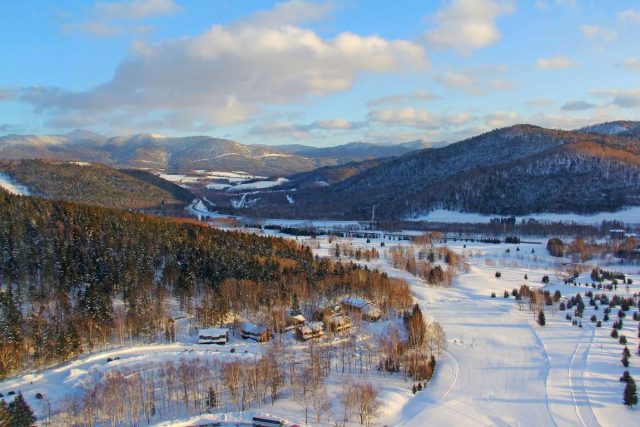
International appeal
Australians looking for an international ski holiday often find themselves pulled to Japan – not surprising considering the minimal time difference, direct flights from most metropolitan cities and reliable snowfall year-on-year.
Areas close to Tokyo such as Hakuba may seem the most obvious choice, but there is a rising appeal to the far-north island of Hokkaido. Famed for its clouds of fluffy powder snow and serviced generously by domestic flights (which can sometimes work out cheaper than bullet trains), it remains the mecca of snow sports for domestic skiers – and international visitors are following suit.
Snow quality and ease of access
The Hokkaido Powder Belt covers a region of approximately 15,000 km2 stretching across the mid-centre of Hokkaido, incorporating seven different mountains of the Daisetsuzan Range and housing a number of micro-climates which attract snow from all directions. The area’s in-land position compounds extremely low temperatures with minimal humidity, creating conditions optimal for the lightest and driest snowfall in Japan.
Over seven ski resorts sit on the Hokkaido Powder Belt, offering a range of terrains from Asahikawa in the north to Tomamu in the south. Of these resorts, Hoshino Resorts’ properties act as ‘bookends’, offering convenient entry and exit points with OMO7 Asahikawa in the north, and Hoshino Resorts TOMAMU down south.
Hoshino Resorts TOMAMU is particularly suitable for families or groups of skiers with mixed expertise due to the plethora of facilities and varied courses to suit all levels. A one-week stay could be split between the two properties which are three hours away from each other, maximising convenience as they offer a range of dining options in their direct vicinity while also acting as comfortable bases to hop to and from surrounding mountains and ski courses.
There’s something for everyone
The beauty of the Hokkaido Powder Belt is that newer skiers can experience the highest quality powder snow in groomed courses, whereas those looking for an element of adventure can explore the backcountry regions and relish in the rugged and untamed landscapes of deep north Japan. For example, Asahidake is an area of predominantly ungroomed, unpatrolled terrain located on the highest mountain of Hokkaido and recommended only to experts.
For skiers still building their expertise, 70% of Kamui Ski Links’ tracks are suitable for those at the beginner or intermediate level offering wide long cruisers, as well as an open policy that allows for tree skiing. The close proximity of mountains and variety of courses means that visitors are dispersed, and the runs rarely feel crowded.
While the Hokkaido Powder Belt is no stranger to being jilted by international travellers in favour of other famed ski-hubs in Japan, why not challenge the status quo and join the locals? There must be a good reason domestic travellers flock to the Hokkaido Powder Belt each year!





